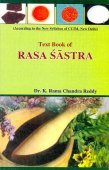Ashtangasamgraha, Aṣṭāṅgasaṃgraha, Aṣṭāṅgasaṅgraha, Ashtanga-samgraha, Ashtanga-sangraha, Ashtangasangraha: 3 definitions
Introduction:
Ashtangasamgraha means something in Hinduism, Sanskrit. If you want to know the exact meaning, history, etymology or English translation of this term then check out the descriptions on this page. Add your comment or reference to a book if you want to contribute to this summary article.
The Sanskrit terms Aṣṭāṅgasaṃgraha and Aṣṭāṅgasaṅgraha can be transliterated into English as Astangasamgraha or Ashtangasamgraha or Astangasangraha or Ashtangasangraha, using the IAST transliteration scheme (?).
In Hinduism
Ayurveda (science of life)
Dietetics and Culinary Art (such as household cooking)
Source: Shodhganga: Dietetics and culinary art in ancient and medieval IndiaAṣṭāṅgasaṃgraha (अष्टाङ्गसंग्रह) and Aṣṭāṅgahṛdaya are considered later treatises as compared to the early Saṃhitas. Vāgbhaṭa, the author of these two texts lived on 5th century CE. The author first wrote Aṣṭāṅgasaṃgraha which is a compendium of eight different sections of treatment which are śalya, śālākya, kāya, bhūta, agada, kaumārabhṛtya, rasāyana and vājīkaraṇa. Though the earlier texts on Ayurveda have discussed these topics, they are not presented in a systematic or in a comprehensive manner. Vāgbhaṭa compiled the earlier conceptions and presented the subject very systematically in the text, Aṣṭāṅgasaṃgraha. He felt that the text has become a voluminous text which is unapproachable for the beginners and wrote another one which is the summary of the former text. The new work is known as Aṣṭāṅgahṛdaya.
Unclassified Ayurveda definitions
Source: archive.org: Vagbhata’s Ashtanga Hridaya Samhita (first 5 chapters)Aṣṭāṅgasaṃgraha (अष्टाङ्गसंग्रह) (“compendium of the octopartite (science)”) refers to one of the three great works of Vāgbhaṭa.—The Aṣṭāṅgasaṃgraha is the only work in which the traditional division of medicine into eight parts is fully implemented. The mixture in the Aṣṭāṅgasaṃgraha of prose and verse reminds one of Caraka and Suśruta, while the Aṣṭāṅgahṛdayasaṃhitā consists only of verses.

Āyurveda (आयुर्वेद, ayurveda) is a branch of Indian science dealing with medicine, herbalism, taxology, anatomy, surgery, alchemy and related topics. Traditional practice of Āyurveda in ancient India dates back to at least the first millenium BC. Literature is commonly written in Sanskrit using various poetic metres.
Languages of India and abroad
Sanskrit dictionary
Source: Cologne Digital Sanskrit Dictionaries: Aufrecht Catalogus Catalogorum1) Aṣṭāṅgasaṃgraha (अष्टाङ्गसंग्रह) as mentioned in Aufrecht’s Catalogus Catalogorum:—med. Quoted by Aruṇadatta.
2) Aṣṭāṅgasaṃgraha (अष्टाङ्गसंग्रह):—med. by Vṛddha-Vāgbhaṭa. Bl. 222-227.
Sanskrit, also spelled संस्कृतम् (saṃskṛtam), is an ancient language of India commonly seen as the grandmother of the Indo-European language family (even English!). Closely allied with Prakrit and Pali, Sanskrit is more exhaustive in both grammar and terms and has the most extensive collection of literature in the world, greatly surpassing its sister-languages Greek and Latin.
See also (Relevant definitions)
Partial matches: Samgraha, Ashtanga.
Full-text (+102): Ashtangahridayasamhita, Vriddha vagbhata, Indumati, Auluki, Pakahamsa, Ashtangahridaya, Venuyava, Anuyava, Sunishannaka, Staimitya, Mutrakshaya, Arunadatta, Mamsakshaya, Medakshaya, Pittakshaya, Kaphakshaya, Majjakshaya, Pancalakshananidana, Purishakshaya, Mukhakshaya.
Relevant text
Search found 9 books and stories containing Ashtangasamgraha, Aṣṭāṅgasaṃgraha, Aṣṭāṅgasaṅgraha, Ashtanga-samgraha, Ashtanga-sangraha, Ashtangasangraha, Aṣṭāṅga-saṃgraha, Aṣṭāṅga-saṅgraha, Astanga-samgraha, Astanga-sangraha, Astangasamgraha, Astangasangraha; (plurals include: Ashtangasamgrahas, Aṣṭāṅgasaṃgrahas, Aṣṭāṅgasaṅgrahas, samgrahas, sangrahas, Ashtangasangrahas, saṃgrahas, saṅgrahas, Astangasamgrahas, Astangasangrahas). You can also click to the full overview containing English textual excerpts. Below are direct links for the most relevant articles:
Puranic encyclopaedia (by Vettam Mani)
Atharvaveda and Charaka Samhita (by Laxmi Maji)
Aṣṭāṅga-Saṃgraha (Āyurveda book) < [Chapter 1 - Introduction]
Vāgbhaṭṭa (Āyurveda scholar) < [Chapter 1 - Introduction]
Caraka (Āyurveda scholar) < [Chapter 1 - Introduction]
History of Indian Medicine (and Ayurveda) (by Shree Gulabkunverba Ayurvedic Society)
Chapter 4 - Text Books of Medicine < [Part 2-3 - Medical Institutions in Ancient India]
Chapter 5 - The Story of Agnivesha < [Part 1 - The History of Medicine in India]
Chapter 5 - Admission to Studies < [Part 2-3 - Medical Institutions in Ancient India]
Cosmetics, Costumes and Ornaments in Ancient India (by Remadevi. O.)
9. Prohibition of Cosmetics < [Chapter 1 - Cosmetics]
1.3. Use of Madayantikā (Henna) < [Chapter 1 - Cosmetics]
2.12. Pharmaceutical use of Perfumes < [Chapter 1 - Cosmetics]
Philosophy of Charaka-samhita (by Asokan. G)
The theory of three faults (tridoṣa-siddhānta) < [Chapter 3 - Fundamental Theories]
Twenty general physical attributes < [Chapter 2 - Fundamental Categories]
The theory of five physical substances (pañcabhūta-siddhānta) < [Chapter 3 - Fundamental Theories]
Maha Prajnaparamita Sastra (by Gelongma Karma Migme Chödrön)
I. Gaze like that of the elephant (nāgāvalokita) < [Part 10 - Looking in the manner of the elephant, etc.]
Related products
